1. Bodie, California
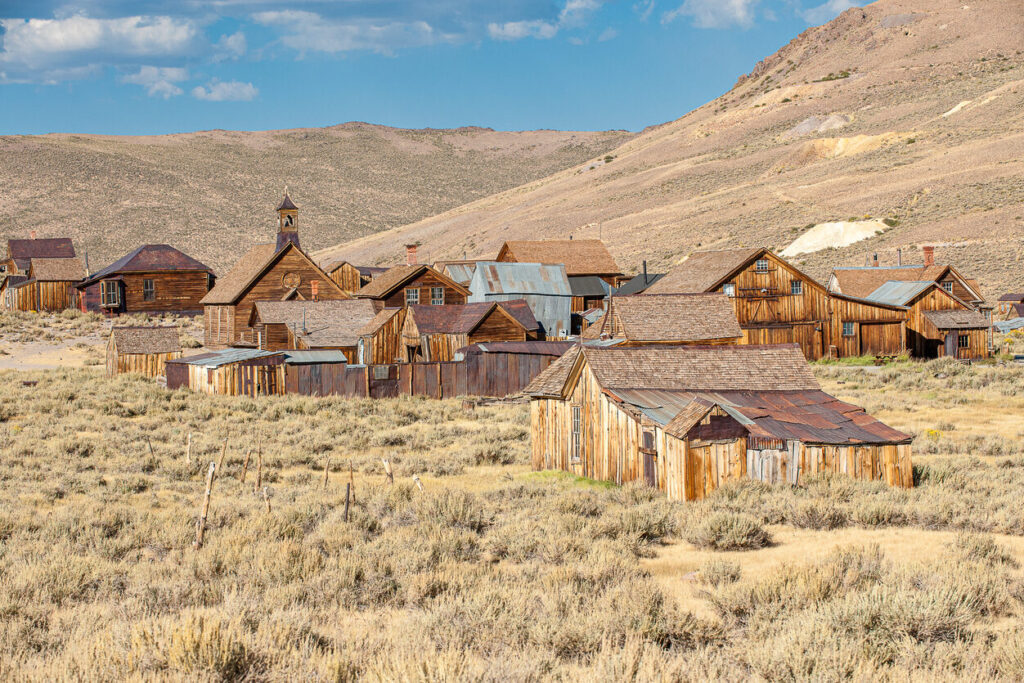
There’s something irresistible about places that time forgot, empty streets that still smell faintly of smoke, schoolrooms with chalk on the board, and crumbling façades that refuse to vanish. Bodie sits in the Sierra Nevada like a stopped clock from the Gold Rush. Once a frenetic mining boomtown, Bodie peaked in the late 1800s with thousands of residents, saloons, and businesses; by the mid-20th century miners and their families had long since moved on. What makes Bodie unique is how it’s been preserved, the state park maintains the town in “arrested decay,” leaving interiors, signs, and household items as they were found so visitors can walk through rooms that still hold the ghosts of daily life. Seasonal access, harsh winters, and a remote approach road add to Bodie’s atmosphere; it’s a place where the landscape and the leftover artifacts combine to show how quickly boom can become bust, yet how stubborn memory can be when a community is protected as a historic site.
2. Centralia, Pennsylvania
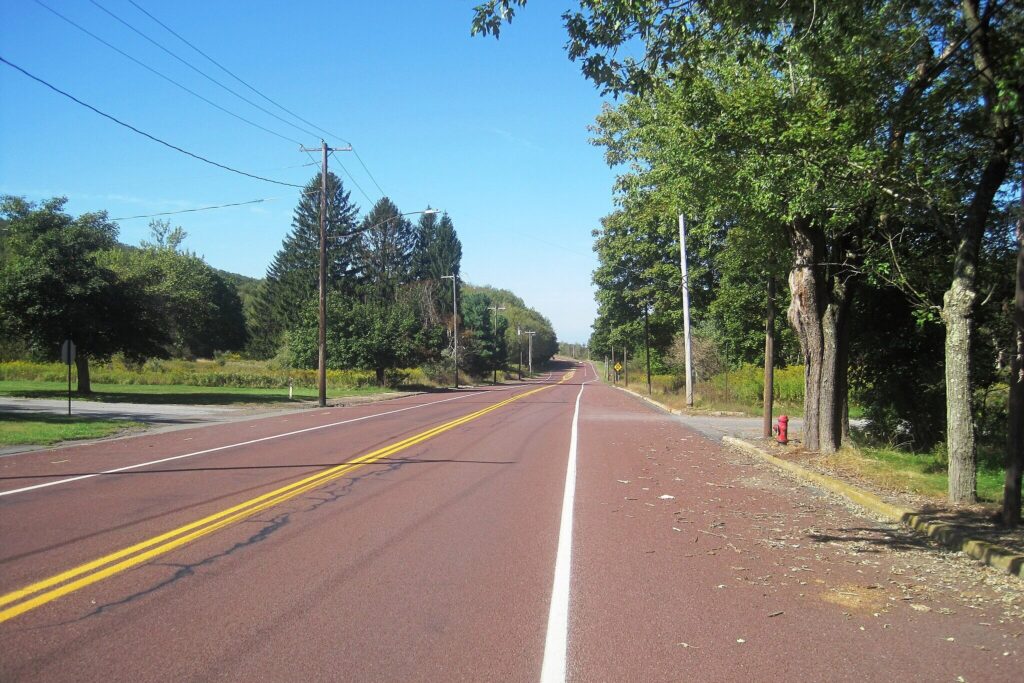
Centralia is a small, stubborn example of how environmental disaster can slowly hollow a town. Founded as a coal-mining community in the 19th century, Centralia’s fate was sealed when an underground coal seam caught fire in 1962. That subterranean blaze, still burning decades later, created toxic gases and sinkhole risks, prompted large-scale evacuations in the 1980s, and led to most homes being condemned or demolished. Yet even as the town’s ZIP code was removed and highway routes rerouted, a few determined residents refused to abandon their land; legal settlements later allowed some to stay for life, and the town’s population dwindled to only a handful of people. Centralia has drawn dark tourism because the cracked highways and puffs of steam make it eerie, but for many it’s also a sobering story about environmental mismanagement, economic decline, and how communities cope with a danger that won’t ever fully go away.
3. Pripyat, Ukraine
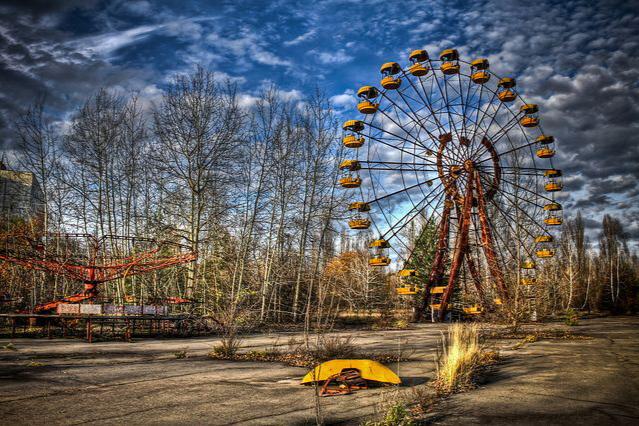
Pripyat is the 20th-century ghost town whose emptiness still echoes a single catastrophic moment. Built to house workers of the nearby nuclear power plant, Pripyat grew rapidly and felt like a modern Soviet city until the Chernobyl disaster on April 26–27, 1986. The city was evacuated within days, leaving behind apartments, toys, a ferris wheel, schools, and everyday clutter, all frozen in time by radiation and abandonment. In the decades since, limited areas inside the exclusion zone have been opened to organized tours, and researchers study how nature reclaims the built environment and how buildings degrade under long-term vacancy and radiological contamination. Pripyat is a place where the human story, technological hubris, and ecological resilience intersect: the city is a museum of both ordinary life and the extraordinary consequences that reshaped it overnight.
4. Hashima (Gunkanjima), Japan
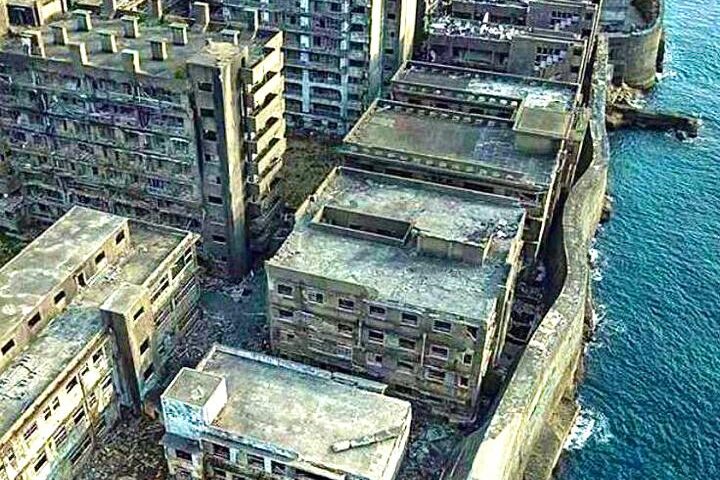
Hashima, nicknamed “Battleship Island” for its silhouette of stacked concrete apartment blocks, rose from the sea as a high-density company town built on reclaimed land around undersea coal mines. At its peak in the 1950s, thousands lived on Hashima in apartment towers, with schools and shops squeezed into the tiny island’s footprint. When coal demand fell and the mine closed in 1974, the company cleared the island and left the concrete shells to the elements. For decades Hashima sat sealed from the public, its concrete skeleton eroding from salt air, but the wreckage became a powerful symbol of industrial fever and decline. After partial restoration to stabilize dangers and create safe walkways, Hashima reopened to tourists in 2009 and later joined a UNESCO industrial heritage listing, though its history also includes the darker issue of forced labor during wartime, a truth that has shaped debates about how the island should be remembered. Walking Hashima’s narrow lanes gives a visceral sense of how quickly a modern, crowded place can turn empty once its economic purpose evaporates.
5. Kolmanskop, Namibia

Kolmanskop is the image that often comes to mind when people picture a ghost town being reclaimed by the desert: Edwardian rooms half-filled with fine sand, halls lit by skeletal windows, and railway tracks swallowed by dunes. It became rich after an early 20th-century diamond discovery and boomed into a well-appointed settlement with hospitals, ballrooms, and rail links. But when diamond finds shifted to richer beaches elsewhere, most residents left, abandoning furniture and belongings, and the Namib Desert began to push back. The dry climate has preserved timber, plaster, and glass in startling ways while the shifting sands create haunting photographic tableaux where curtains and chandeliers meet dunes. Today Kolmanskop is restrictive to access because it’s inside a controlled Sperrgebiet (restricted diamond area) and requires permits, but it remains a powerful example of colonial-era extraction, abandonment, and the slow geological processes that transform human architecture into part of the landscape.
6. Humberstone and Santa Laura, Chile
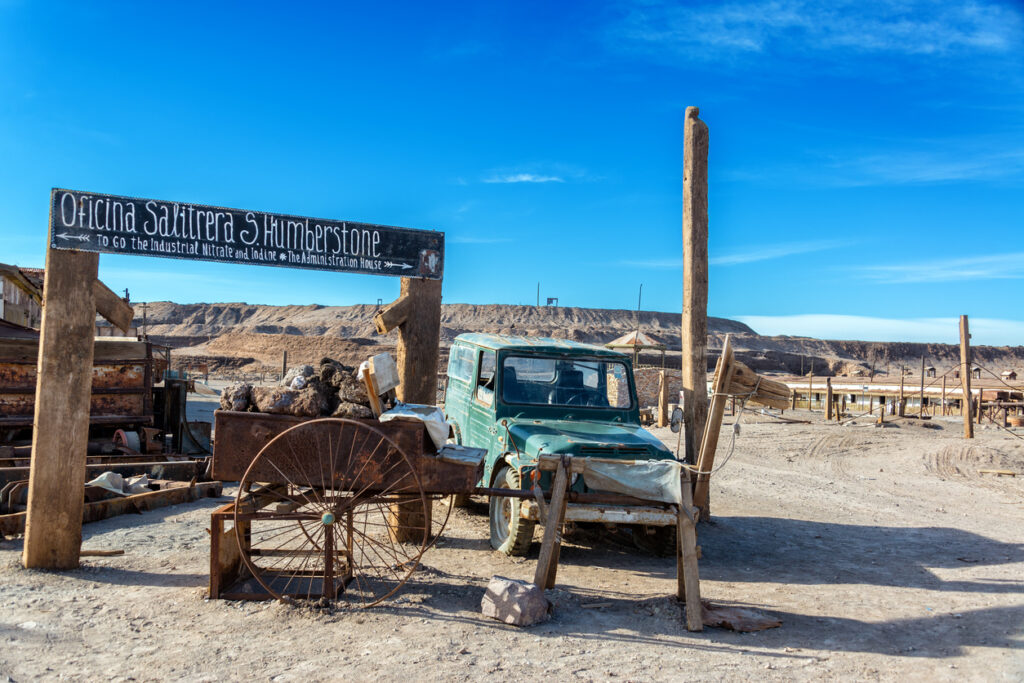
High in Chile’s Atacama Desert, the saltpeter towns of Humberstone and Santa Laura once thrummed with industry and a distinctive worker culture tied to “white gold.” Saltpeter (nitrate) was essential for fertilizer and explosives in the 19th and early 20th centuries, drawing thousands into remote company towns that offered housing, schools, and communal life, but often under strict corporate control and difficult conditions. When synthetic alternatives and shifting markets made natural saltpeter uneconomic, the companies folded and communities emptied in the mid-20th century. Because the Atacama is exceptionally dry, many buildings, signage, and machinery were preserved remarkably well; the sites were declared UNESCO World Heritage in recognition of their industrial and social history. Today they stand as open-air museums where rusted processing plants, worker dormitories, and faded posters reveal both the technological past and the resilience of a culture formed in extreme isolation. Restoration efforts and cultural programming have helped safeguard the towns while making the history accessible to visitors and former residents who return for commemorations.
7. Oradour-sur-Glane, France
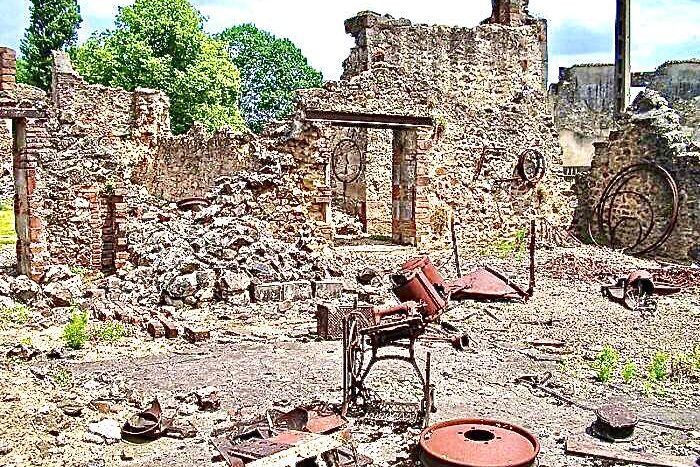
Oradour-sur-Glane is a ghost village preserved not by accident but by deliberate choice as a memorial. In June 1944, a Waffen-SS company massacred civilians and razed the village, killing hundreds in one of World War II’s most horrific single massacres of noncombatants in France. After the war, French leaders made the solemn decision never to rebuild the original village: the burned-out shells and personal items were left in place so future generations would see the consequences of wartime brutality. The site functions as both a ruin and a museum; visitors walk streets with scorched facades, paused clocks, and scattered artifacts, objects that give the tragedy an intimate human scale. Preserving Oradour’s ruins as a “village martyr” was meant to ensure remembrance, reckoning, and education: the silence and the frozen domestic details underscore how ordinary lives can be erased in a moment of violence, and how memory can be turned into a deliberate act of witness.
8. Picher, Oklahoma (Tar Creek)
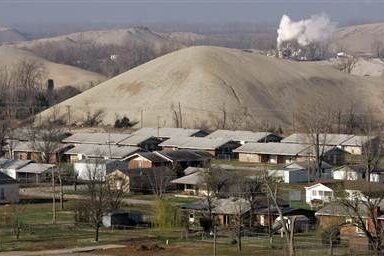
Picher’s decline is a cautionary tale about resource extraction and environmental harm. Once part of the Tri-State mining district, Picher grew on lead and zinc mines that drove local economies but also left a legacy of waste. Decades of mine tailings, sinkholes, and contaminated groundwater created serious health and structural hazards; lead poisoning threatened children, while collapsing ground endangered homes. By the late 20th and early 21st centuries, federal Superfund clean-up efforts and repeated disasters, including flooding and sinkholes, prompted mass relocations and buyouts. The town was effectively vacated and dissolved as a municipality, leaving weathered buildings and the specter of industrial negligence. Picher’s story ties together boomtown prosperity, the human cost of extractive industries, and modern environmental policy: the ruins stand as a lesson about who pays when profits leave and pollution remains. (No active town center remains; the site is often cited in discussions of remediation and community displacement.)
9. Rhyolite, Nevada
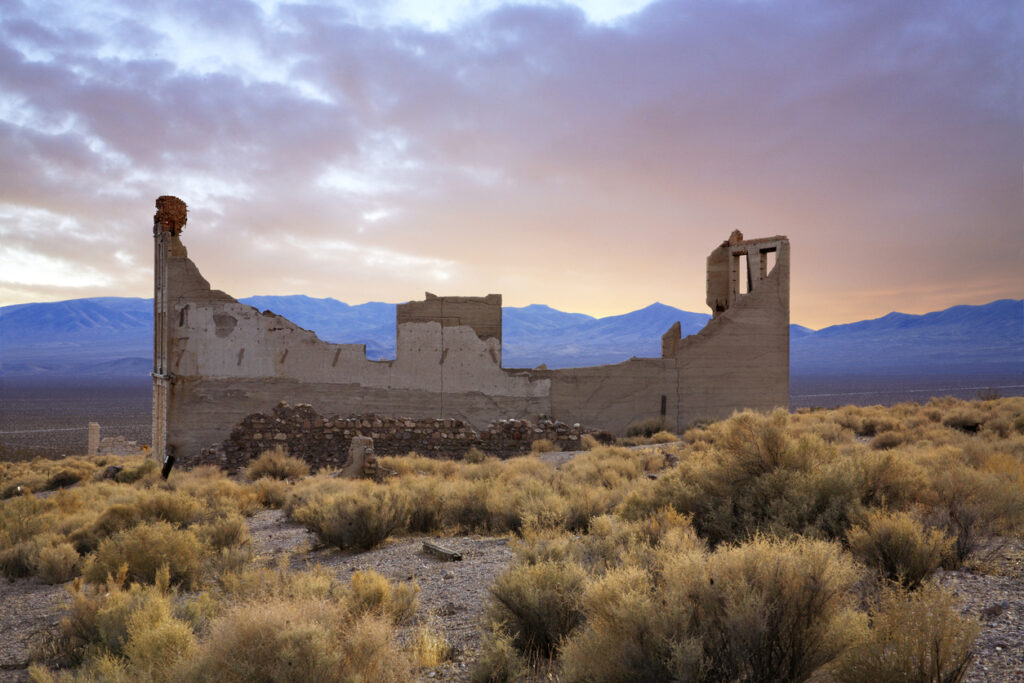
Rhyolite sprang up almost overnight after a 1904 gold discovery in Nevada and for a brief moment claimed amenities like an opera house, electric lights, and even a stock exchange. The boom was dramatic: in a few years thousands arrived and wooden storefronts lined the streets. But the ore proved shallow and inconsistent; economic realities closed the mines and people departed just as quickly as they’d arrived. Today Rhyolite’s ruins, an evocative bank building with a shattered façade, skeletal foundations, and desert-scattered timbers, attract photographers, Route 66-era travelers, and history buffs. Its desiccated setting, close to Death Valley, makes preservation difficult but cinematic: crumbling masonry and sun-bleached timbers capture the brief, intense life of Western mining fever and the quiet that follows when the gold runs out.
10. St. Elmo, Colorado

High in Colorado’s Elk Mountains, St. Elmo was a railroad and mining hub in the late 19th century and now survives as a remarkably intact ghost town. At its height the town supported mines, a railroad spur, hotels, and saloons; when rail service and ore prices waned, the population evaporated and St. Elmo’s buildings were left behind. Because the town sits at high elevation and is relatively remote, many of its wooden structures and log cabins have been preserved, giving visitors a strong sense of frontier life. Unlike towns that are fenced off, St. Elmo has a tiny community of caretakers and seasonal residents; some structures are maintained for tourism and private vacation use. Walking the main street past storefronts and shuttered homes evokes the rhythms of a community once tied to rail schedules and ore yields, and it shows how touristic stewardship can give a ghost town a second, quieter life.
11. Glenrio, New Mexico / Texas

Split by a state line and frozen in Route 66 lore, Glenrio is the kind of border town that collapsed when highways moved and interstates bypassed local economies. During the mid-20th century it served travelers on the old Mother Road with gas stations, cafés, and motels that catered to cross-country motorists. When the Interstate system rerouted traffic, Glenrio’s businesses lost customers and closed; by the end of the century the town was little more than weathered signs, collapsed roofs, and tumbleweed-strewn lots. What makes Glenrio evocative is its roadside Americana atmosphere, neon, painted motifs, and heartbreak, and how transportation policy can create or destroy whole local economies overnight. For Route 66 enthusiasts, Glenrio is a snapshot of mid-century mobility and the consequences when the road itself moves.
12. Varosha (Famagusta), Cyprus
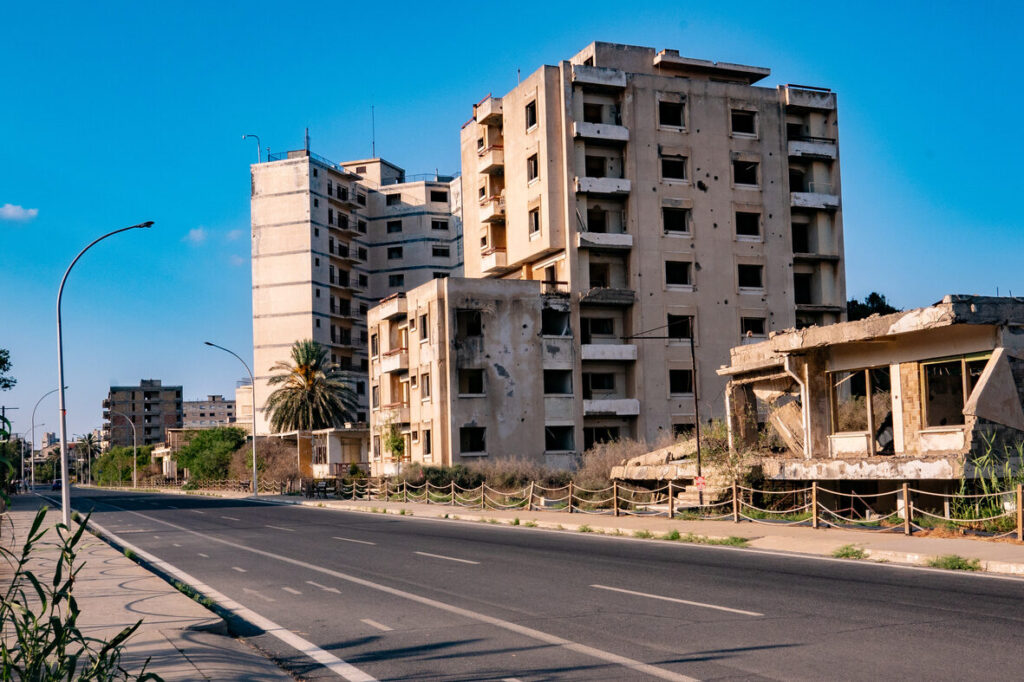
Varosha is a unique political ghost: an entire coastal resort district left to stand still for decades because of conflict. Once a glamorous Mediterranean resort in Famagusta with beaches, hotels, and restaurants, Varosha was fenced off and abandoned in 1974 after intercommunal violence and following Turkey’s intervention in Cyprus. For decades it remained under military control and decayed behind barbed wire, becoming an eerie symbol of frozen geopolitics, beaches where deck chairs eroded and high-rise hotels crumbled while olive trees pushed through cracked pavement. In recent years there have been intermittent moves, negotiations, and controversy about partial reopenings and redevelopment, but the underlying division of the island keeps Varosha’s future contested. As a ghost town, it’s a reminder of how war and unresolved political conflicts can pause normal life for generations.
13. Kayaköy (Livissi), Turkey
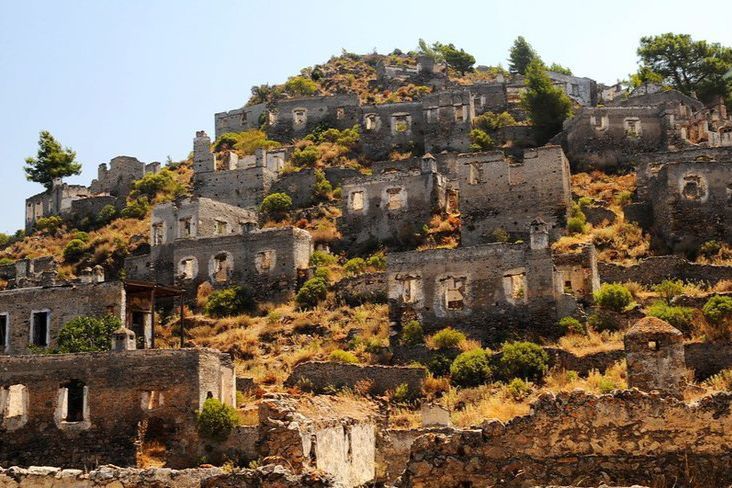
Perched above the Mediterranean near Fethiye, Kayaköy (once Livissi) tells a story of forced migration and cultural change. The town was largely abandoned after population exchanges and wartime population movements in the early 20th century between Greece and Turkey; Greek Orthodox residents left and most buildings were never reoccupied. Stone houses, churches, and narrow streets remained intact but empty, their windows and stairways open to the sun. Today Kayaköy is an open-air museum and protected site where visitors can wander a hillside of empty homes and imagine a once-thriving coastal community. Local efforts focus on conservation, education about historical coexistence and displacement, and small-scale cultural events that bring attention to the layered histories embedded in limpid stone walls and silent courtyards.
14. Shaniko, Oregon

Shaniko earned the nickname “Wool Capital of the World” in the early 20th century after a railroad and wool industry boom, but when rail routes shifted and markets changed, the town’s economic lifeblood drained away. Unlike many mining boomtowns, Shaniko’s economy centered on agriculture and transport; the decline came through technological and logistical changes rather than a single environmental disaster. Today the main street of Shaniko, with its wooden storefronts, vintage signs, and preserved post office, is a living ghost town where small museums, craftspeople, and occasional events keep the place on the map. Shaniko is notable for how an agricultural transport hub can become a preserved pocket of American frontier and commercial history, offering visitors a quiet, readable landscape of bricks, boardwalks, and the turn-of-the-century optimism that once built it.
These towns refuse to die because their buildings, stories, and landscapes keep insisting we look closer. Like this story? Add your thoughts in the comments, thank you.


